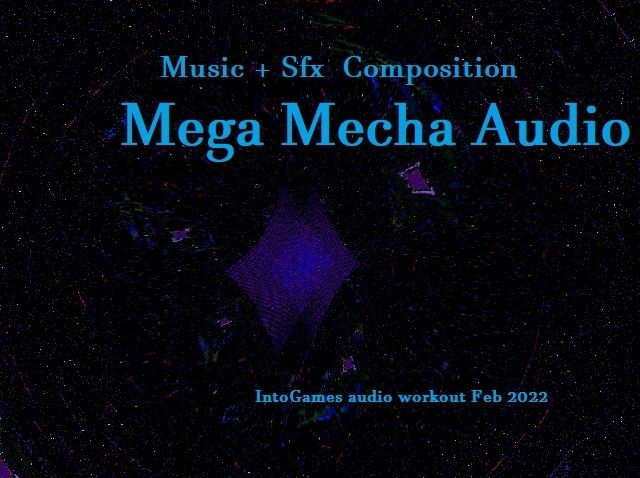sound log 1: The Works
Feb. 25, 2022.
Audio Competition & Criteria
An Indie Networking Discord channel hosted a competition to develop an audio track for a High Stakes Robot Battle. So I went for it, with the idea to create a hybrid Sound Design Sfx and Music track.
Below, I documented my development process in broad strokes, and included misc. notes and references and meandering findings from along the way. What goes into a Robot Battle? What if I mix Gunadam sounds with Rock em' Sock em' 90s blips.. electrical thrums and explosions..hmm. Possibly overwhelming but very likely to be fun.
I began with two personal criteria to frame the project.
1) The submission must weave together Sfx, ambient, and musical rhythmic & melodic phrases.
2) It must incorporate: external instruments, Ableton production with Vsts, and Sfx all with a twist of robo themed sound design. LEO's the limit!
The Process
Step 1: Rhythm & Structure
I love Taiko drums for dramatic battles and heavy exploration and began with a series of Taiko rhythmic patterns and permutations.

Step 2 & 3: Sound Palette and Melodic Themes
I then gathered a series of instruments and Sfx from my personal source library and jumped into the space adding sounds and melodic tunes with layered synth rhythms, sirens, and beeps&bloops based from the Taiko foundations.
Arps are fantastic for creating mathematically precise rhythms. [future post?]

Step 4: Sfx & foley recording
Sound effects were added and mixed and layered throughout the process to create a soundscape backdrop suited spacey Robot Battles. At one point, the Sfx completely took over and the piece was like 90% a string of pure Sfx. Definitely overly seasoned. Even after reducing the sounds substantially, the track remains Sfx heavy.

Foley Recording for specific Sfx.

Step 5: External Instruments
One of my favorite parts of this entire process was playing guitar with some wild as pedal and plugin effects. Though only a few guitar bends ultimately made it in, it was a hugely productive session with lots of saved plugin chains and recordings for future use.
The session also has me rethinking my studio set-up. My guitar is mounted across the room for spacing purposes, but I'm seeing that it needs to be even easier to reach.
Note: Ableton-Hydrasynth midi routing was also incorporated. This connection definitely warrants its own blog post.
Step 6: Mixing it for easy listening
The track was first mixed on 250 Ohm impedance flat balanced headphones for stereo effects and then later balanced for laptop speakers. This too is a rabbit hole for a post in the future.
Step 7: Iteration
The entire process was very fluid; the steps were sloshed around, layers were mixed up, sfx modified, melodies deleted, and combinations smoothed all in a blurry series of steps.

And the product? It was fun. Perhaps not the most efficient or elegant way to construct a track, but one thing I can say with certainty is that I created a ton of new material and it was indeed an Audio Workout - Mission successful. Until next time ✌️
Visualization on youtube

